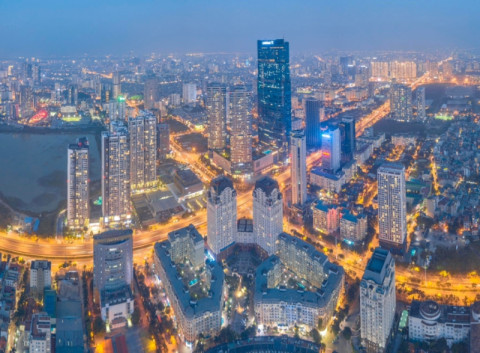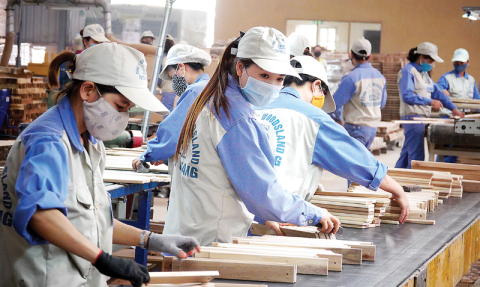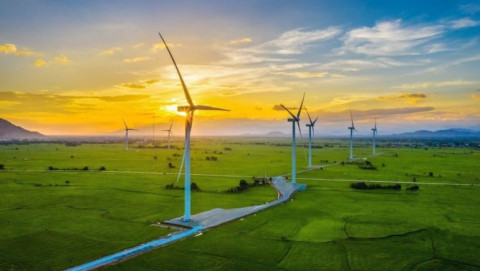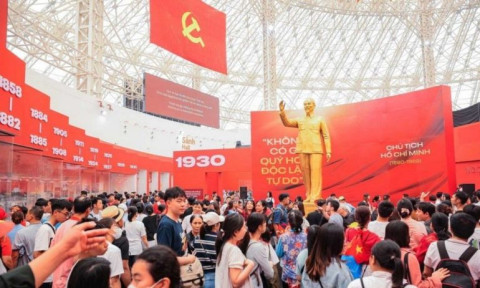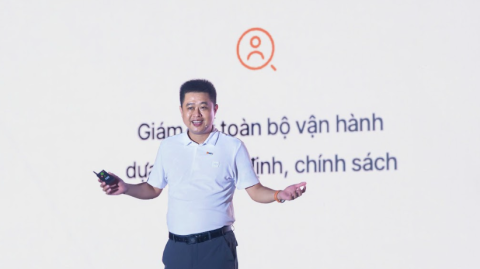A pilot study of dedicated bicycle lanes in Hanoi
- 175
- Socially Responsible Enterprise
- 18:50 18/09/2022
DNHN - The city requires relevant agencies to review and arrange static parking spots in the inner city and the districts; study bicycle lanes when synchronously developing traffic infrastructure to ensure order, and safety and reduce congestion.
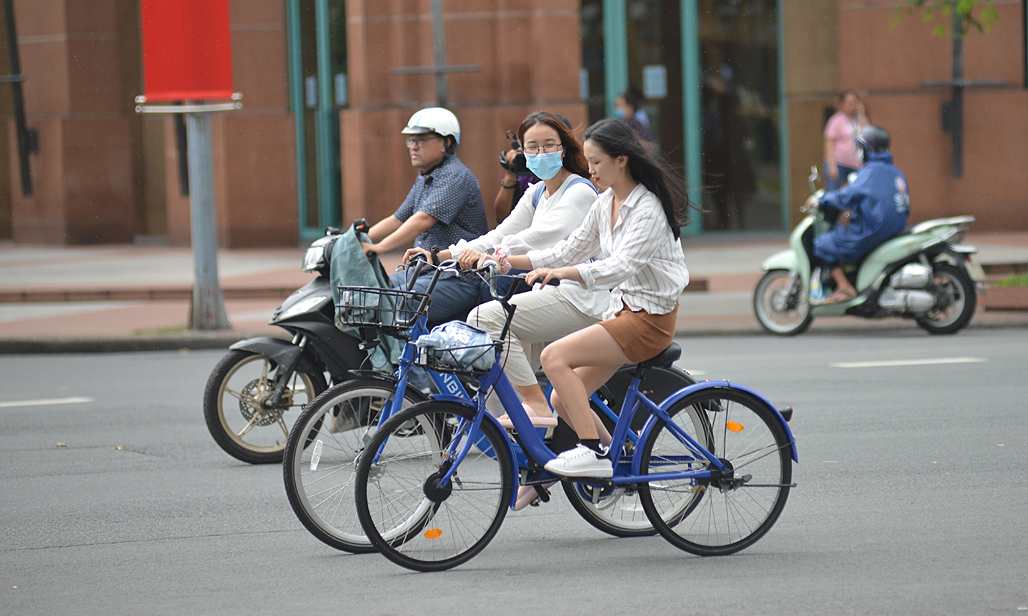
In the recently issued plan to combat traffic congestion in the 2022-2025 period, the capital government has proposed a series of solutions, including reviewing and arranging static parking spots in the inner city and the districts; investing in accessible transportation systems for people with disabilities and the elderly in urban areas, works to ensure traffic for vulnerable people; pilot study of dedicated bicycle lanes.
One of the remarkable solutions proposed by Hanoi is to only approve investment in apartment buildings, high-rise buildings, and commercial centres when it is suitable for planning and meets the requirements and regulations on parking lots, traffic infrastructure and traffic connections with main roads in urban areas.
In recent years, Hanoi has piloted lane separation and separation of vehicles between cars, motorbikes and rudimentary vehicles on many roads but there is no separate lane for bicycles. The city has also repeatedly planned to pilot a bicycle rental service in some districts but has not yet implemented it.
As of July 2022, Hanoi has more than 7.6 million vehicles, including more than 1 million cars, nearly 6.5 million motorcycles of all kinds, and about 180,000 electric motorbikes. As for bicycles, there have been no statistics from the city's authorities for many years.
To achieve the set plan, Hanoi City will mobilize all resources, and invest in the rapid and synchronous development of traffic infrastructure according to the plan, especially traffic works that play a role in reducing congestion.
Specifically, Hanoi focuses on closed investment in ring roads, radial traffic axes, bridge systems across rivers, key intersections...
The radial axes, the main urban main axes, the inter-regional routes; the bridge system across the river; key intersections, intersections of different levels; urban railway lines as planned; urgent works to solve congestion and ensure traffic safety will also be invested.
The city plans to increase the proportion of land for traffic, and at the same time build planned rest stops to serve essential needs along national highways and provincial roads, ensuring that the driver is no more than 4 break times.
In the coming time, Hanoi City will strengthen the management of sidewalks and roadways to ensure the right of way for pedestrians; strictly manage the temporary use of sidewalks and roadbeds as parking spots; do not let the situation of occupying sidewalks and roadbeds for business obstruct traffic.
PV (t/h)
Related news
- Connecting Leaders, Shaping the Future: Strategic Leadership Planning Meeting – CorporateConnections Hanoi A
- Sunlight - Unilever Vietnam Recognized for Outstanding Contributions to the National Initiative Supporting Women Entrepreneurs
- Deputy Prime Minister Nguyễn Chí Dũng: “The country’s major challenges weigh heavily on my mind — and we must resolve them together.
- Unitsky String Technologies signs cooperation agreements with three Vietnamese partners, opening a new direction for smart mobility and sustainable development
- When artists do business – livelihood is no poetry!
- Before the D‑day to abolish flat‑rate tax: Fear of technology and costs leave small traders struggling to adapt
- Vietnamese enterprises at a crossroads: the impact of a potential US–China deal
- "Digital technicians" must not be forgotten if Vietnam aims to meet its strategic goals
- HDBank: Impressive profit growth, leading in profitability and advancing international integration
- TNI King Coffee sued for over VND 5 Billion in unpaid debts
- VINASME and Jeonnam Technopark Sign MOU on technology cooperation, human resource training, and trade promotion
- Vietnamese entrepreneurs strengthen ASEAN connectivity in the digital iIntegration era
- Prime Minister: Vietnam aims to become a regional logistics hub
- Vietnam upgraded to Secondary Emerging Market by FTSE Russell
- Hanoi’s economy grows 7.92% in first nine months of 2025, FDI surges nearly threefold
- Vietnam’s strong gdp growth fails to ease labor market distress
- US tariffs on Brazil propel Vietnam’s pangasius into global spotlight
- VietLeap AI Accelerator launches: A strategic springboard for Vietnam’s AI startups
- CICON expands strategic alliances: A new step forward in Vietnam–Korea business connectivity
- What must Vietnamese enterprises do to maintain their position in the global supply chain?
Đọc thêm Socially Responsible Enterprise
When artists do business – livelihood is no poetry!
A series of indictments, arrests, and bankruptcies among artists has sounded a serious alarm.
Hanoi’s economy grows 7.92% in first nine months of 2025, FDI surges nearly threefold
Hanoi maintained robust growth momentum in the first nine months of 2025 with GRDP up 7.92% year-on-year, driven by strong services and construction sectors.
Vietnam’s strong gdp growth fails to ease labor market distress
As the year draws to a close, the pressing challenge for businesses and policymakers is how to rebuild worker morale, retain top talent, and stabilize employment amid lingering uncertainty.
Vietnam ramps up efforts to lift EU “Yellow Card” on Illegal fishing
Prime Minister Pham Minh Chinh has called for intensified and coordinated efforts to have the European Commission’s “yellow card” on Vietnam’s fisheries removed within this year.
Quang Tri calls for investment in wind power plant project worth over VND 1,100 billion
The People’s Committee of Quang Tri Province has officially announced the Hưng Bắc Wind Power Plant Project as part of its investment invitation portfolio.
Hanoi receives two million visitors during the four-day National Day holidays
From August 30 to September 2, Hanoi received around 2.08 million visitors during the four-day National Day holidays , three times higher than the figure in the same period last year, the municipal Department of Tourism reported.
Ca Mau gradually makes its mark on the national tourism map
By 2025, Ca Mau aims to attract 8.4 million visitors and achieve a total revenue exceeding 8,585 billion VND, contributing to the province's double-digit growth target.
UNDP Resident Representative hails Vietnam as an emerging economic powerhouse
Millions of people have been lifted out of poverty, hunger has been eliminated, and the economy has maintained consistent growth rates of over 6 per cent, UNDP Resident Representative in Vietnam Ramla Khalidi remarks.
Alpha Books Chairman Nguyen Canh Binh: The survival weapons of Vietnamese entrepreneurs in the age of AI.
Alpha Books Chairman Nguyen Canh Binh shares three essential lessons to ensure the survival and growth of Vietnamese entrepreneurs in the digital age: creativity, connection, and collective intelligence.
Mr. Le Viet Thang, CEO of 1Office: "Don’t use old solutions for new ai challenges"
As artificial intelligence (AI) reshapes the global technology landscape, Vietnam is taking decisive steps to establish a National AI Research and Development Center, alongside the National Data Center.



